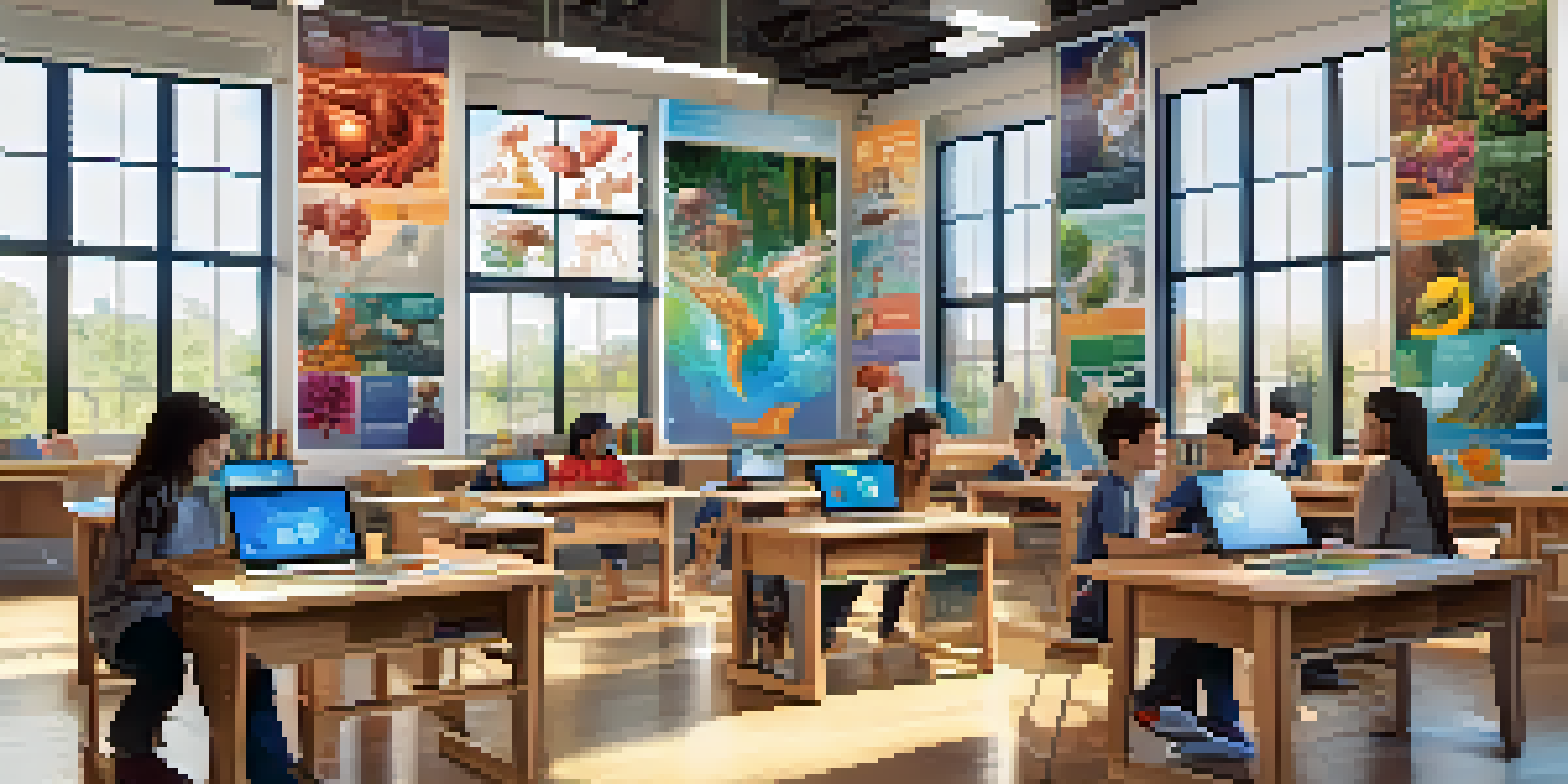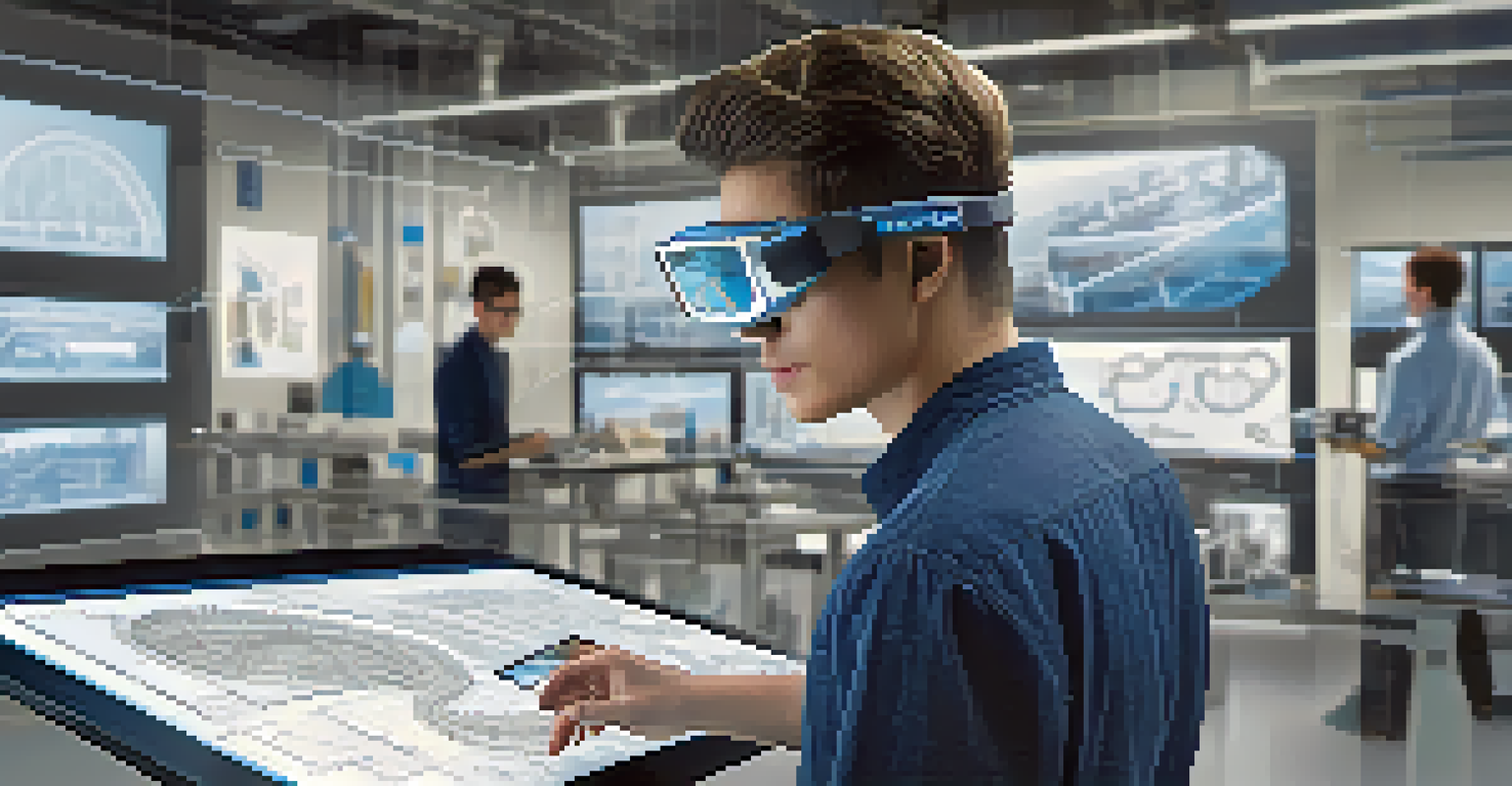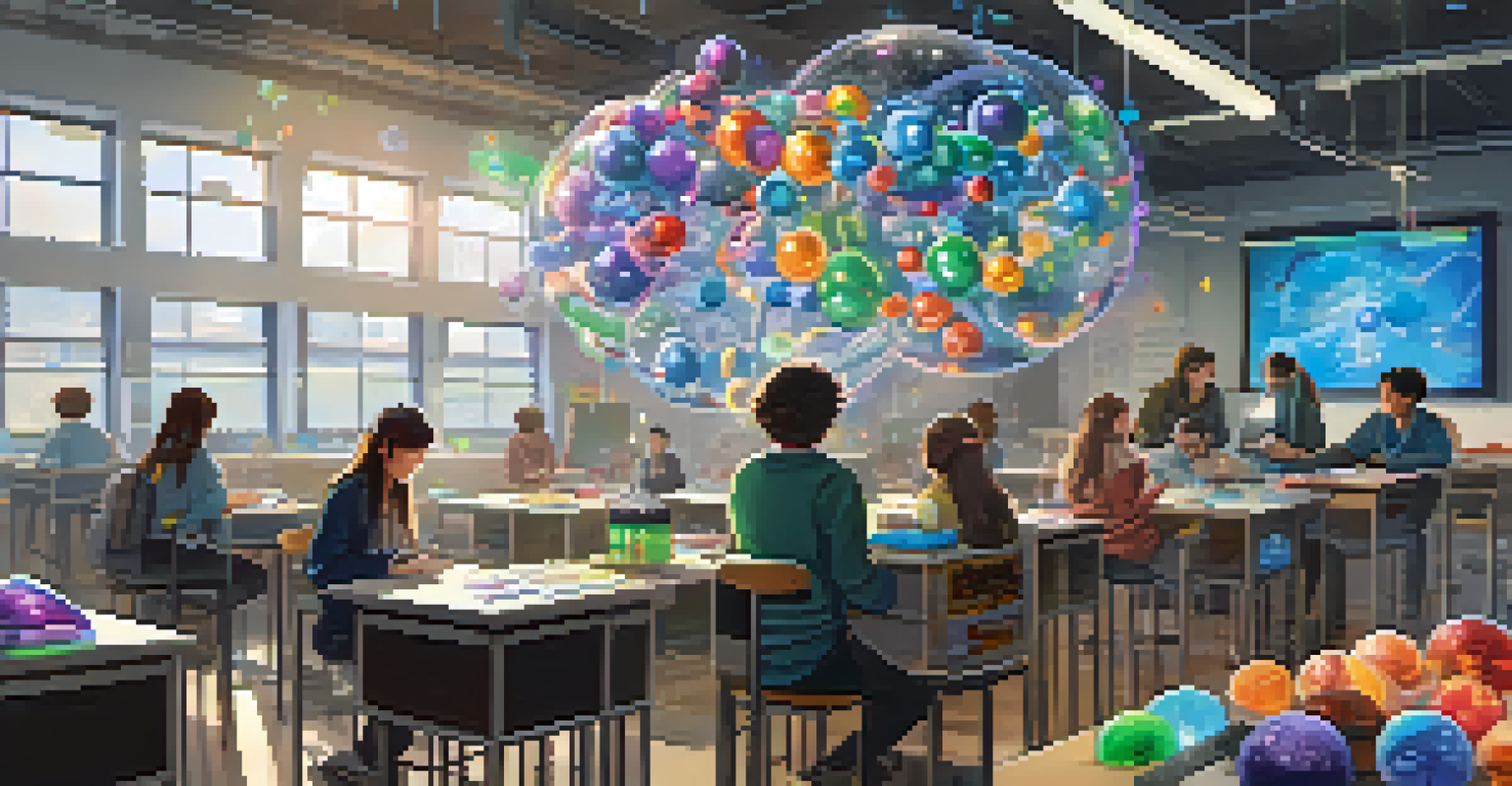The Integration of Augmented Reality in STEM Education

Understanding Augmented Reality in Education
Augmented Reality (AR) is a technology that overlays digital information onto the real world, providing an interactive experience for users. In education, AR can transform traditional learning methods by immersing students in their subjects. Imagine a biology class where students can see 3D models of the human anatomy right on their desks; this is the power of AR in action.
Augmented reality will change the way we learn, providing a bridge between the digital world and our physical reality.
By blending physical and digital elements, AR appeals to various learning styles, making complex topics more accessible. This technology is not just about flashy visuals; it enhances comprehension by allowing students to visualize and manipulate concepts. For instance, in a physics class, students can interact with virtual objects to better understand forces and motion.
As AR continues to evolve, its integration into STEM education promises to foster deeper understanding and engagement. By using AR tools, educators can create dynamic learning environments that encourage exploration and curiosity. This sets the stage for a more innovative and effective approach to teaching STEM subjects.
Benefits of AR in STEM Classrooms
Integrating AR into STEM classrooms offers a plethora of benefits, chief among them being enhanced engagement. When students can interact with digital elements, they are more likely to become active participants in their learning experiences. For example, a chemistry lesson can come alive when students can visualize molecular structures in 3D, making abstract concepts tangible.

Another significant advantage is the ability to provide personalized learning experiences. AR allows students to learn at their own pace, exploring topics that interest them deeply without the constraints of a traditional curriculum. This tailored approach helps students grasp difficult concepts and fosters a love for learning.
AR Enhances Engagement in Learning
Augmented Reality transforms traditional education by making learning interactive and engaging for students.
Moreover, AR can bridge gaps in understanding by allowing students to visualize phenomena that are otherwise abstract. For instance, in mathematics, students can manipulate shapes and see their properties interactively. This not only enhances their understanding but also prepares them for real-world applications of their knowledge.
Real-World Applications of AR in STEM
Many educational institutions have begun to implement AR technology into their STEM programs, showcasing real-world applications. For example, engineering students can utilize AR to visualize complex structures and systems, identifying potential flaws before they even begin the design process. This hands-on approach not only enhances learning but also mimics industry practices.
The future belongs to those who prepare for it today.
In medical education, AR is revolutionizing how future healthcare professionals learn. Students can practice surgical procedures on virtual patients, allowing for a risk-free environment to hone their skills. This innovative training method prepares them for real-life scenarios, ultimately improving patient care.
These examples illustrate that AR is more than just a novelty; it is becoming an essential tool in preparing students for future careers. By integrating AR into their curricula, educators are equipping students with practical skills and knowledge that align with industry demands, making them more competitive in the job market.
Challenges of Implementing AR in Education
While the benefits of AR in education are compelling, there are challenges to its implementation. One major hurdle is the cost of AR technology, which can be prohibitive for many schools, particularly in underfunded districts. This financial barrier can limit access and prevent equal opportunities for all students to benefit from AR-enhanced learning.
Additionally, there is a learning curve associated with using AR tools, which can be daunting for both educators and students. Teachers must be adequately trained to integrate these technologies into their lessons effectively. Without proper training and support, the potential of AR may go untapped, leaving students without the immersive experience that this technology promises.
Personalized Learning with AR
AR allows students to explore topics at their own pace, fostering a deeper understanding of complex concepts.
Another concern is ensuring that AR content is pedagogically sound. Not all AR applications are created equal, and educators must carefully select resources that align with their learning objectives. This requires research and consideration, which can be time-consuming and overwhelming for busy teachers.
The Future of AR in STEM Education
Looking ahead, the future of AR in STEM education is bright, with ongoing advancements promising even greater integration. As technology continues to evolve, we can expect more affordable and user-friendly AR solutions that can easily fit into the classroom setting. This accessibility will open doors for many more students to experience the benefits of AR.
Furthermore, as industries increasingly rely on AR for training and development, educational institutions will need to adapt their curricula accordingly. This ensures that students are not only familiar with AR technology but also equipped to use it effectively in their future careers. The symbiotic relationship between education and industry will drive innovation and relevance in STEM fields.
Ultimately, the potential for AR to revolutionize STEM education lies in its ability to engage, inspire, and prepare students for the challenges of tomorrow. By embracing this technology, educators can create dynamic learning environments that foster creativity and critical thinking, essential skills in our rapidly changing world.
Examples of AR Tools for STEM Learning
Several AR tools are already making waves in STEM education, offering exciting possibilities for both teachers and students. One popular example is Google Expeditions, which allows students to take virtual field trips to locations like the depths of the ocean or the surface of Mars, all from their classrooms. This immersive experience ignites curiosity and encourages exploration beyond traditional textbooks.
Another noteworthy tool is Merge Cube, a handheld device that enables students to hold and interact with 3D objects in AR. Imagine a student learning about the solar system and being able to rotate and examine a 3D model of a planet right in their hands. This tactile experience not only enhances understanding but also makes learning fun.
Real-World Applications of AR
Integrating AR into STEM education prepares students for future careers by equipping them with practical skills and knowledge.
Lastly, applications like ZSpace offer a comprehensive AR/VR platform that immerses students in 3D simulations across various STEM subjects. With these tools, educators can create rich, interactive lessons that captivate students’ imaginations and foster a deeper understanding of complex concepts.
Conclusion: Embracing AR for Enhanced Learning
The integration of augmented reality in STEM education is not just a trend; it represents a fundamental shift in how we approach learning. By bringing abstract concepts to life and making learning interactive, AR has the potential to transform students’ educational experiences. As we embrace this technology, we must also consider the challenges and work collaboratively to overcome them.
Educators, administrators, and technology developers must come together to ensure that AR is accessible, effective, and aligned with educational goals. By investing in training and resources, we can create an inclusive environment where every student can thrive. The future of learning is bright, and AR will play a pivotal role in shaping it.

As we look to the future, let's continue to explore innovative ways to integrate AR into our classrooms. By doing so, we can inspire the next generation of thinkers, problem-solvers, and innovators ready to tackle the challenges of tomorrow.